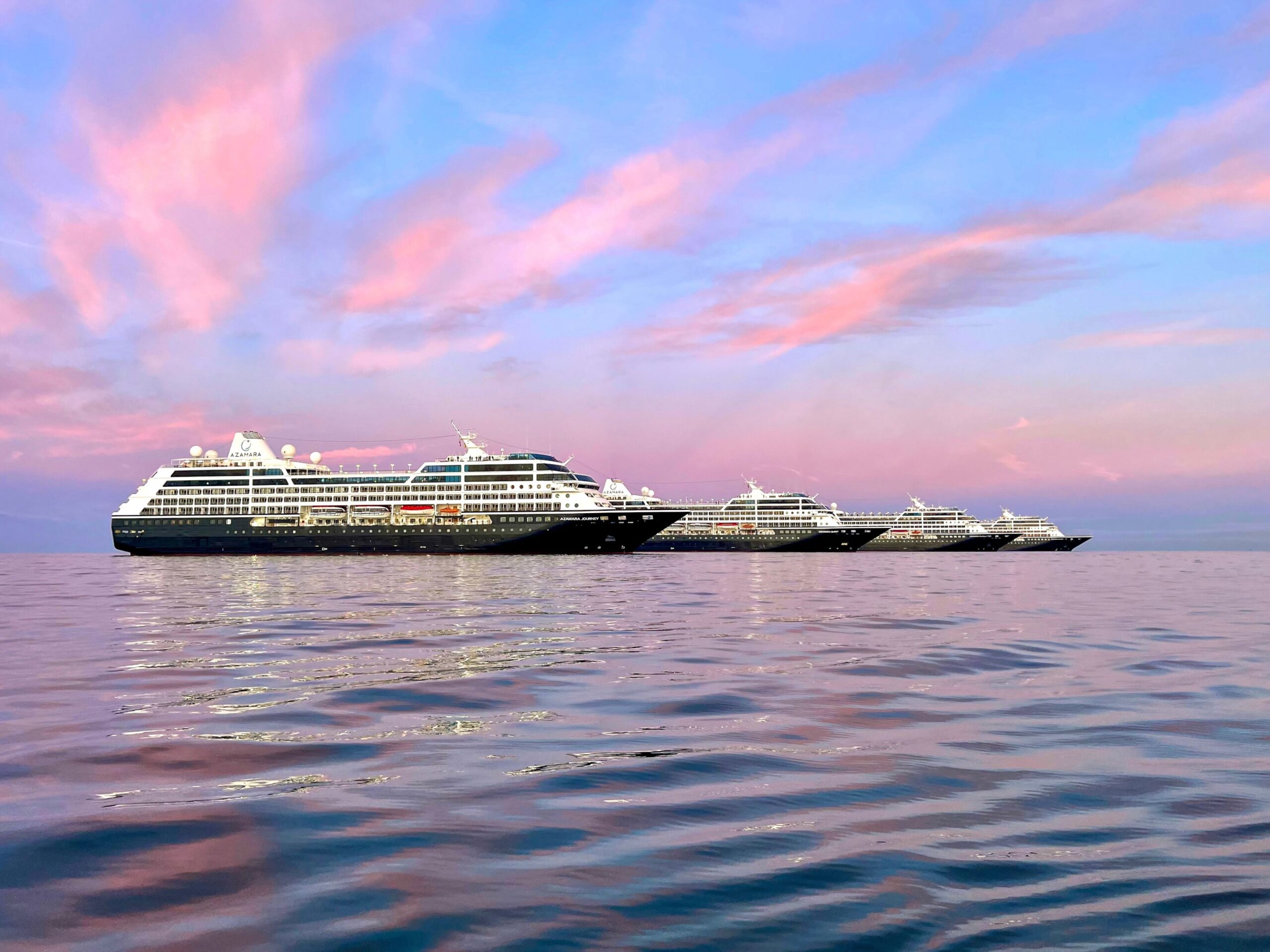Cleopatra had one which Antony much admired, while the Dowager Empress Tzu Hsi had a marble one permanently anchored in an ornamental lake…
…the Russian Romanoffs had too many to count, and Kaiser Wilhelm II was obsessed about having the largest. I’m talking, of course, about royal yachts, those once overly decorated ships of state with which monarchs impressed each other.
Some years ago, I discovered in the P&O Cruises archives some photographs and papers relating to two commercial ocean-going ships that had been taken from their owners and/or intended service and converted to royal yachts: the 6,900-ton Ophir (1891), built for Orient Steam Navigation Company, and the 12,000-ton Medina (1911), built for P&O. This remarkable story was soon prepared for inclusion in one of my lectures on board P&O Cruises ships.
As I began my lecture, indicating that it would be about the two ships and how neither Orient nor P&O could refuse the government request for their requisitioning, the room erupted. Several hundred people launched into their own debate on the pros and cons of monarchy or republic, and on what the companies should have told the government to do with such ‘requests’. The lecture was so successful it had to be repeated. So, despite my fear of reigniting the debate or provoking endless letters to the editor, I relate the tale of Ophir and Medina.
When Ophir was built in Scotland for the Australian service, she was the biggest ship in the trade, with a sleek yacht-like profile that instantly gained her public approval. Ophir rarely sailed with a poor load, yet burning 127 tons of coal a day she was expensive and never turned a profit. The Orient Line took ship-builders Napiers to the highest court and the eventual ruling was in favour of Orient, in that Ophir was not built according to contracted specifications.
She may have been an ugly duckling to some, but to the traveller she was the most beautiful of swans. Her reputation was further enhanced in 1900 when the British Government decided she would carry the Duke and Duchess of Cornwall and York, later to become King George V and Queen Mary, on a tour of the Empire, during which the duke would open the first Parliament of the Commonwealth of Australia.
Up to 800 workers were employed on the conversion of Ophir. Nineteen first-class cabins were gutted to provide individual suites for the royal couple. Each suite consisted of sitting room, bedroom, dressing room and bathroom, along with a staircase that led to the servants on the deck below. Nothing but the best of fittings was used, and in fact, the original estimate of £70,000 ballooned to £110,000.
The royal couple and their retinue finally left Portsmouth on March 16, 1901, calling at Australia, New Zealand, South Africa, Canada and imperial ports. By the time she returned, she had steamed 33,000 nautical miles.
In 1911, the British Government decided that King George V and Queen Mary, in recognition of their roles as Emperor and Empress of India and to reinforce the imperial message, should visit India and hold a Coronation Durbar.
However, carrying the king and queen on such a voyage along with the court, officers of state, household officers and staff presented a problem: nothing on this scale had ever been attempted. Admiralty eyes soon fell upon the new P&O steamer Medina, which was being fitted out in Scotland. The request was made to P&O, who could not refuse, so Medina, like Ophir, was handed over to be converted into a royal yacht.
Medina was built by Caird’s of Greenock, and launched in 1911. A month later, while being fitted out, she was taken by the Admiralty and completed to royal specifications, which included a white hull with a double band of royal blue and gold.
Medina left Portsmouth with the king and queen on board on November 11, 1911. On the outward passage, the Bay of Biscay put on one of its legendary storms, which laid low the king and most of the crew. However, none of this bothered the cowman and his three Windsor cows, who were being carried to provide the queen with her favourite brand of milk! On Medina’s return three months later, the ship was decommissioned and refitted for P&O service.
These two royal voyages were undertaken at the height of the British Empire. Neither voyage was intended as a show of imperial glory; rather, they were a necessary means of transport, similar to modern-day travels by heads of state in aircraft.
Both Ophir and Medina were escorted by units of the Royal Navy, and as they voyaged from sea to sea, they were greeted by the various powerful Royal Navy fleets who were stationed throughout the world to maintain
pax Britannia.
Words: Rob Henderson








